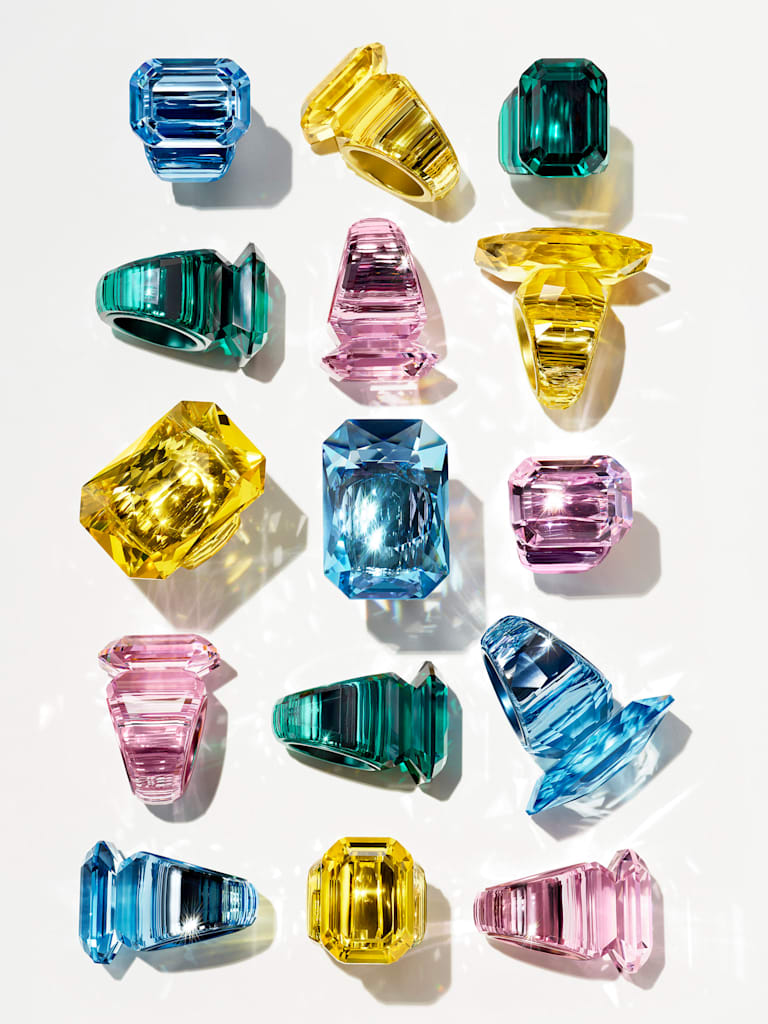Global businesses like ours have a duty to reinvent the way they operate. If we act quicky and boldly, we can still lessen the worst of the expected impacts. That is why we are working hard to reduce our waste and our emissions, and continually seeking to implement measures that meaningfully cut our environmental footprint.
Discover more below about the three pillars of our sustainability strategy that focus on our planet: Greenhouse Gas Emissions; Conscious Materials; and Waste & Circularity.

Reducing emissions
Title:Scope 1 and 2 reduction plans:
• Investing in our energy infrastructure, including renewables, photovoltaics, heat pumps, hydrogen infrastructure, and storage potential to further improve our energy efficiency.
• Introducing electrification wherever possible, including for our glass-melting furnaces.
• Outbalancing our remaining energy consumption with renewable Energy Attribute Certificates.
Scope 3 reduction plans:
• Increasing our product material efficiency and switching from primary to recycled metal sources.
• Operating a global hybrid working policy (including some days working from home).
• Working with our suppliers to encourage more renewable energy in their production processes.
• Gradually shifting from air to sea and train freight.

Energy Efficiency
Title:As part of our efforts to increase our energy efficiency, reduce our greenhouse gas emissions, and switch to renewable energy sources wherever possible, our aim is to expand the use of photovoltaics at our manufacturing sites and administrative offices. In Wattens, Austria, we have installed our second large-scale photovoltaic system, providing 300 Kilowatt peak (kWp) covering 1,600m2. We have previously installed a 1400kWp system at our crafting site in Thailand as well as a solar rooftop hot water system in India, and there are more photovoltaic installations in the pipeline.
Glass-melting furnace design study
Together with a multinational glass company specializing in glass and glass-ceramics, we commenced a design study to test if our aggregates could be melted solely using electric power. The study showed that the aggregates can be melted using 90% electricity, meaning we can substantially reduce the use of gas during this process. We are close to implementing a concept to address the remaining 10% of energy used. Once we have achieved this, we will be able to melt large volumes of aggregates using 100% renewable energy, marking a big milestone in our journey towards reducing the carbon footprint of our crystal.

Swarovski Stores
Title:While much attention is paid to the materials stores are constructed from, and how much energy they consume, there is less focus on the significant volumes of waste material produced by store relocations, closures, and refurbishments. We have run multiple pilots to investigate the potential for recycling former elements of our store architecture, and we have so far recycled more than 100 metric tons of material via our commercial partners. We firmly believe it is our responsibility to act sustainably at the end of a store’s life and not just ahead of its grand opening or during daily operations.

Sustainable Products
Title:We have mandated that, by 2030, 50% of our products must be created in line with our Sustainable Products Guiding Principles:
• Materials are derived from responsibly managed or recycled sources.
• Products are produced efficiently, without waste, and can be repurposed.
• Customers can easily return pre-loved items so we can extract the precious materials.
• Products do not harm people or the environment.
• Product communications are honest, ethical, and promote responsible use.
To help us achieve this challenging objective, we launched our Sustainable Materials Pipeline (SMP) in 2021. The SMP enables our Design, Product Development, Product Marketing, and Operations teams to work collaboratively introduce more sustainable materials. Plus, it provides us with the tools to rate the sustainability attributes of materials from the start of the process.

Cristaux ravivés
Title:Nous croyons avec force au pouvoir positif et transformateur de la collaboration. Ainsi, nous avons mis en place des projets de conception respectueux de l’environnement, et des partenariats à travers lesquels nous faisons également don de cristaux ravivés à des institutions académiques de renommée mondiale, à des créateurs en devenir ou à des noms déjà établis, afin qu'ils puissent les utiliser dans leurs créations. Notre objectif est à la fois de les encourager à réutiliser ce matériau raffiné en y insufflant toute leur créativité et de les sensibiliser à l’importance du design durable et à la rareté de nos ressources.
En 2021, nous nous sommes par exemple associés à Viktor&Rolf, qui ont pu alors intégrer nos cristaux ravivés dans leur collection haute couture Automne/Hiver 2021. De la même manière, Kevin Germanier a élaboré sa collection Printemps/Été 2022 à partir de ces mêmes cristaux et de matériaux durables. Nous avons également travaillé avec ce dernier à la conception d’un flacon de parfum recyclé incrusté de cristaux ravivés pour le parfumeur Guerlain.

Efficiëntie in productie
Title:In een andere fabriek, die ook in Wattens ligt, gebruiken we een koelsmeermiddel-circuit bij het slijpen van de kristallen. Dit circuit houdt 1200 m3 aan vloeistof vast en heeft een zorgvuldige toevoeging van relevante chemicaliën nodig voor optimale prestaties en stabiliteit. Van 2015 tot 2021 hebben we de hoeveelheid koelsmeermiddel gehalveerd. Daarnaast hebben we een aantal chemicaliën volledig of gedeeltelijk uit het proces kunnen halen, zoals kitprecipitatiemiddel en ontschuimer, en hebben we onze corrosieremmer opnieuw vormgegeven zodat deze fosfor uitstoot.
Al deze verbeteringen zijn het resultaat van innovatie, niet van verminderde productie, en ze brengen ook veiligheidsvoordelen voor onze collega’s met zich mee.





